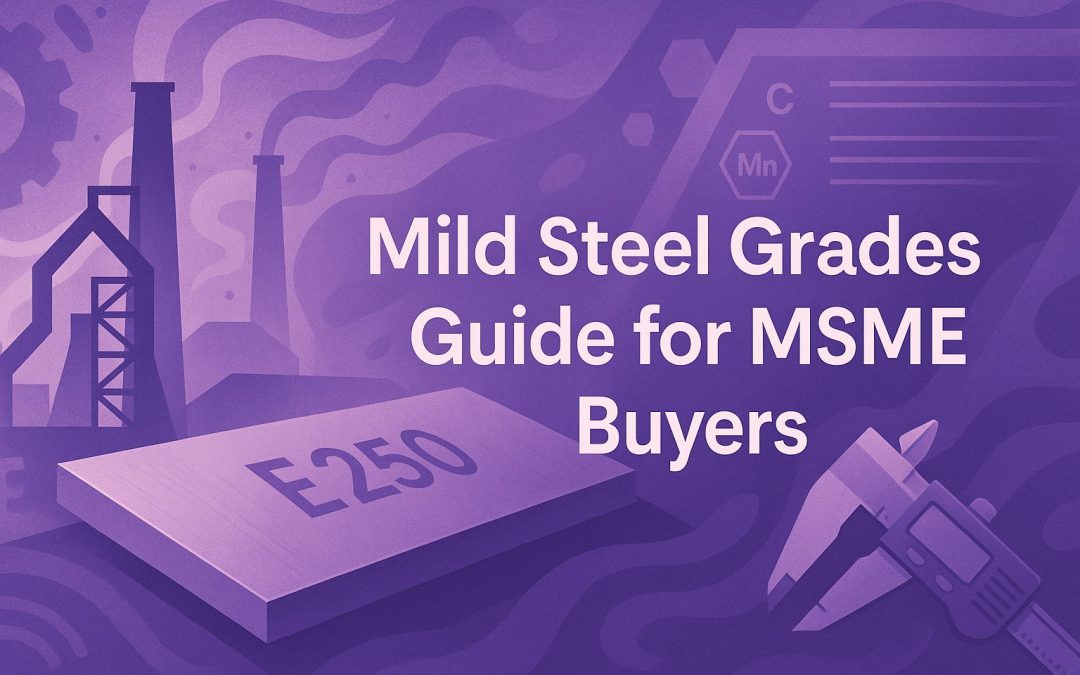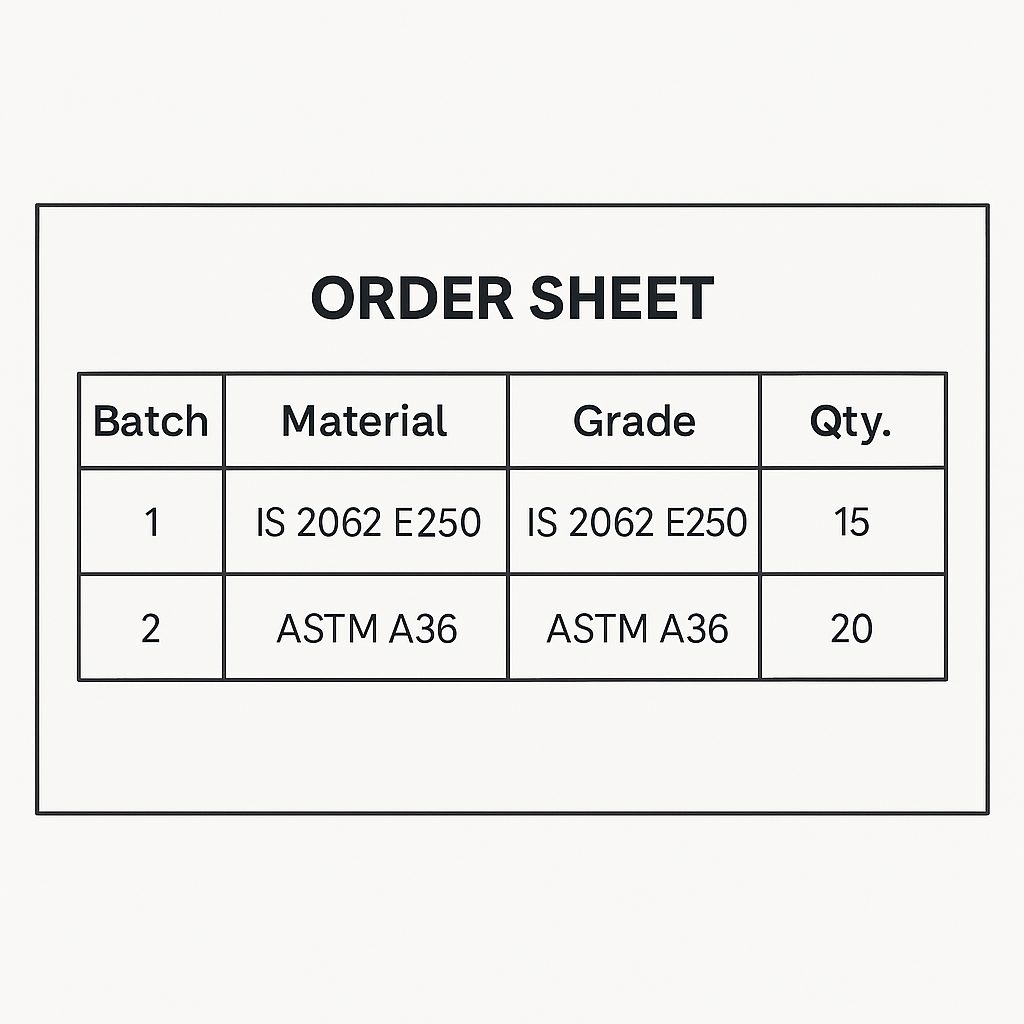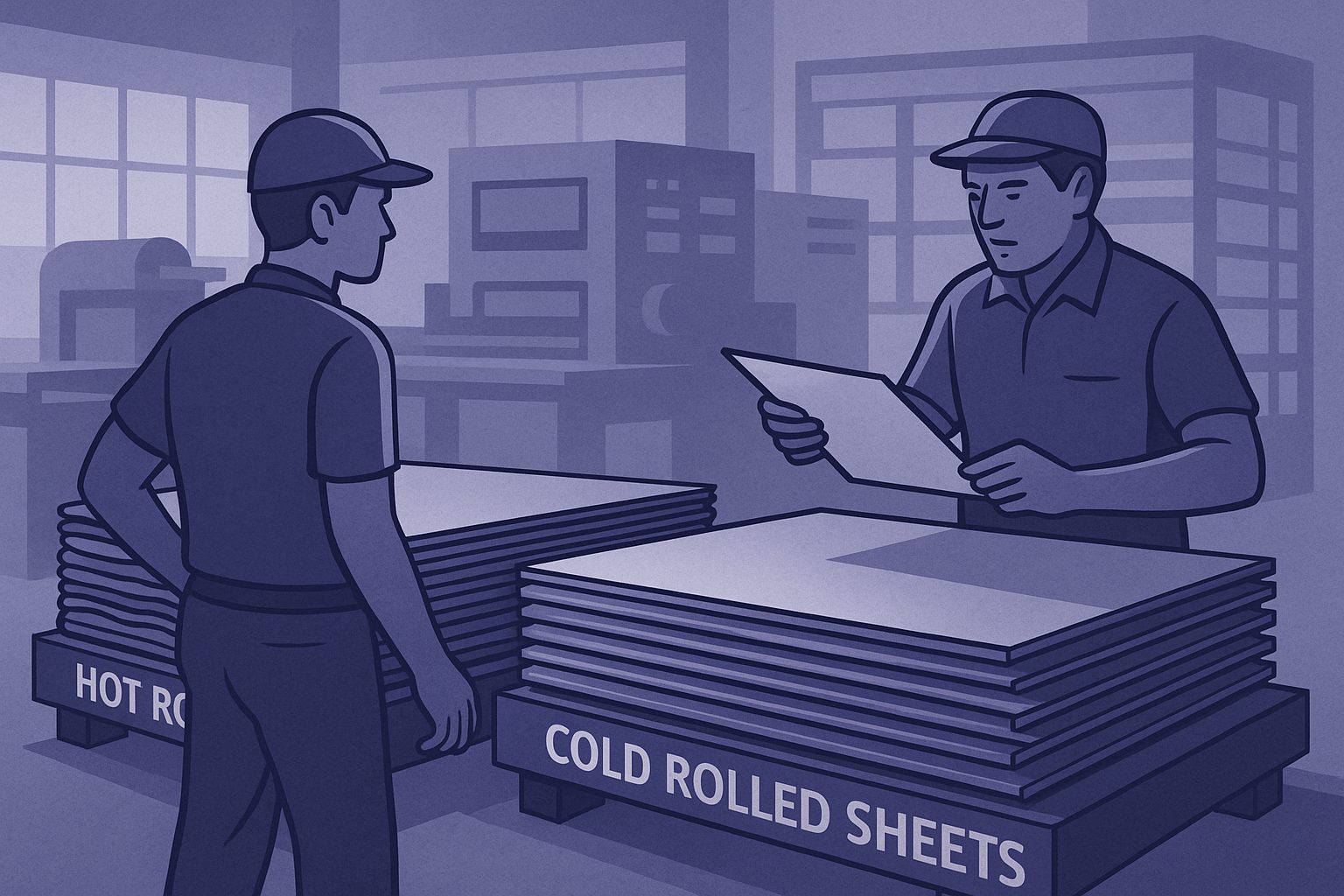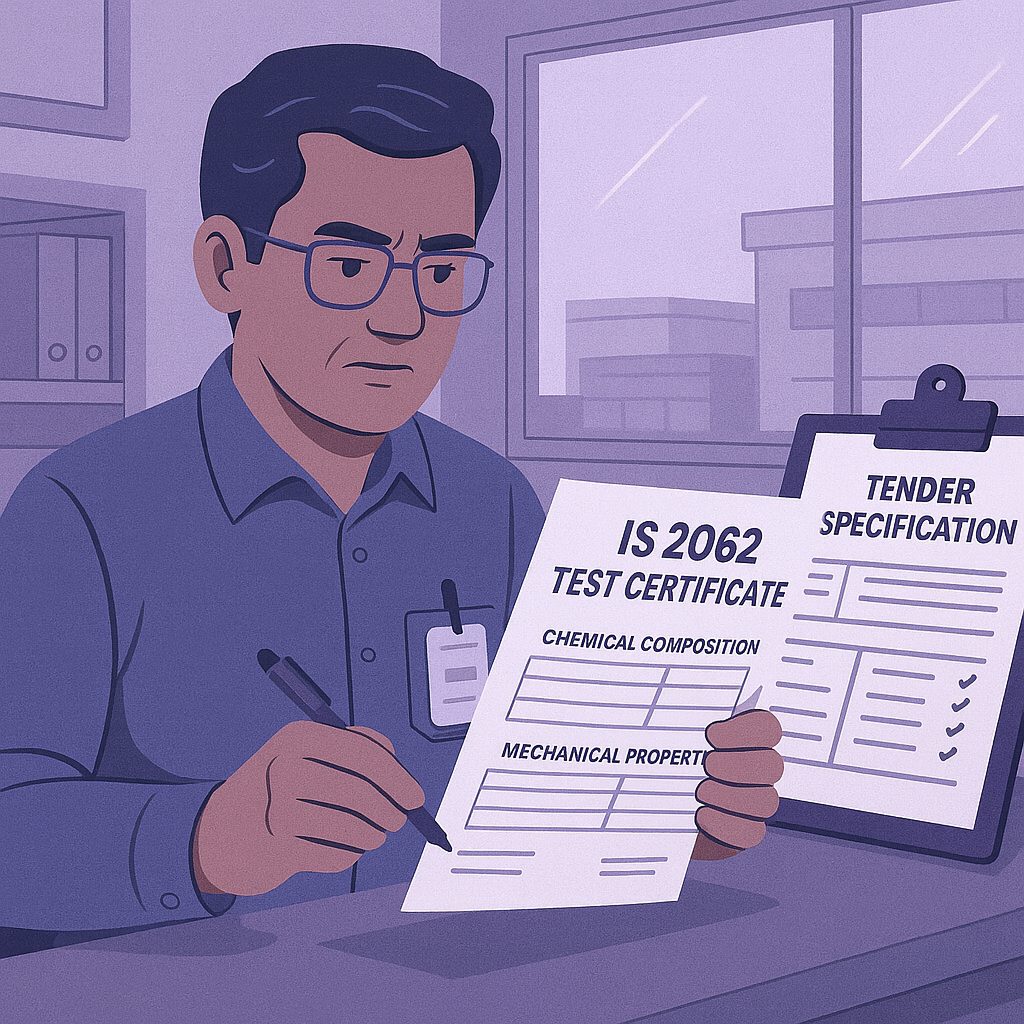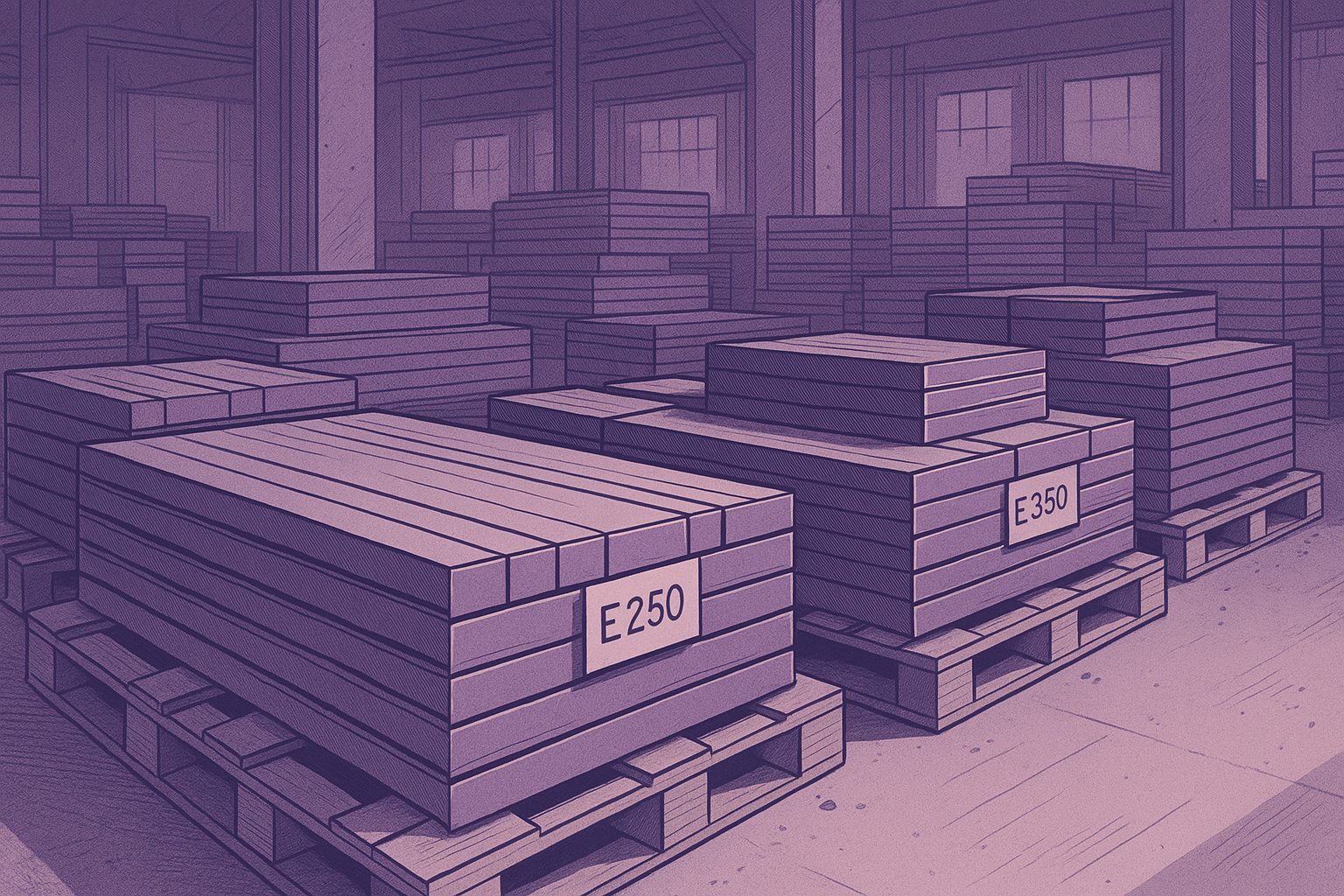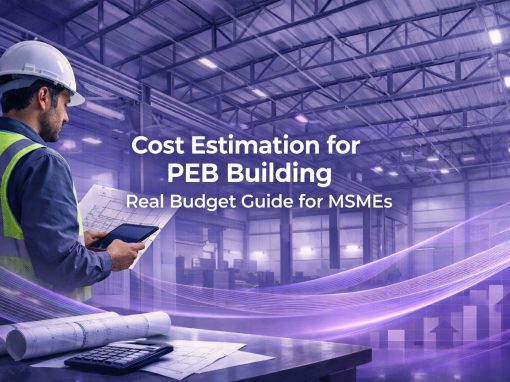Table of Contents
For most small and mid-sized manufacturers, steel is ordered with a single goal in mind — keep production moving. Yet, beneath that urgency, the mild steel grades stamped on the delivery note decide more than most realise. A wrong choice can push a shipment past its deadline, stall fabrication lines, or cause a job to fail a basic inspection. It is not an abstract risk; it happens on shop floors and construction sites every week.
In tender-driven work, especially with government buyers, grade compliance is often the first thing checked and the fastest reason for rejection. A beam cut from the wrong IS grade will not make it past the first verification round. Once that happens, the best price or fastest delivery promise no longer matters. The order gets re-routed, and the supplier’s reliability score takes a hit.
The grades themselves — IS 2062 E250, E350, E410 and others — are more than codes in a catalogue. They define the carbon content, tensile strength, and weldability that will decide whether a section can be bent on the shop press without cracking, or welded without costly preheat. A plate rolled for structural use will not behave the same way in fine fabrication work, and forcing it to fit the job can create scrap faster than output.
For MSMEs operating on tight contracts, this balance between suitability and supply is not optional — it is the difference between a profitable month and a loss on the ledger.
Understanding Mild Steel Grades and Standards
In the steel trade, “mild steel” is an umbrella term. It covers everything from thin galvanised sheets to heavy beams, yet most MSME purchase orders don’t stop there. They must pin down the grade, because without it, suppliers quote differently, inspectors read specs loosely, and projects risk rejection.
In India, the most common reference is IS 2062. Within it, grades like E250, E350, and E410 tell you the minimum yield strength — the point where steel stops returning to its original shape. Higher numbers handle heavier loads. An E350 section, for instance, is often used in crane booms or industrial frames, while E250 works fine for lighter fabrications. The wrong choice is not just a technical mismatch; it can lead to a failed load test or a project halt.
There are other Indian standards too. IS 432 covers wire rods, IS 277 specifies galvanised sheets. Public works tenders sometimes mix in foreign references — ASTM A36 from the US, S275JR from Europe, JIS G3101 SS400 from Japan.
Note:
Grades are not just labels. They come from the steel’s chemical recipe and how it’s processed. Mild steel keeps carbon low, which makes it easy to cut, bend, and weld. Manganese boosts strength. Rolling method changes finish and behaviour — hot rolled has a rougher surface and better structural tolerance, cold rolled offers smoother finish for precision work.
Small buyers often make one of two mistakes: over-specifying a high grade “just to be safe” and overspending, or under-specifying and facing rework. A shop fabricating stair rails for a municipal contract can run E250 without issue. A supplier making drive shafts for an OEM may need E350 or better. The skill lies in matching what the drawing asks for with what the market can supply, at the right time, without blowing the budget.
Selecting the Right Grade for MSME Applications
Getting the grade right is where many MSMEs either save money or lose it. It’s rarely just a technical call. The decision mixes buyer demands, what the market has on hand, and how quickly the order needs to move.
Match to the Job, Not Just the Drawing
Every component has a working life and a stress level. Mild steel E250 under IS 2062 handles most handrails, platforms, and warehouse racks without issue. E350 or E410 shows up where the work is heavier — crane arms, dump-truck bodies, machine frames. Too often, buyers go high “just to be safe” and burn through budget, or cut it too low and face a failed inspection.
Think About How It Will Be Worked
On the shop floor, the form matters as much as the grade. Hot rolled sections can take rough handling, easy to cut and weld. They’re common in frames and beams. Cold rolled steel is fussier but gives a clean finish and precise dimensions. Ideal for casings, enclosures, or assemblies where fit matters. Using the wrong one adds time — more grinding, more fitting, more cost.
Check What’s in the Yard, Not Just the Spec
A perfect grade on paper is no help if it’s sitting in a mill two states away. Many MSMEs have been caught waiting three extra weeks for the “right” grade while losing work hours and delivery slots. Sometimes, an equivalent — ASTM A36 instead of IS 2062 E250 — gets the job done, if the client signs off early.
Keep Your Own Grade Map
The smartest buyers keep a simple sheet that lists common client grades, their equivalents, and what local stockists usually carry. This one habit shortens calls to suppliers, avoids confusion, and helps when the clock is ticking on a tender.
Compliance, Documentation, and Tender Readiness
In public procurement and large private contracts, compliance is often where deals are won or lost. For mild steel orders, this is more than sending a delivery note. Buyers, especially in government and infrastructure projects, will expect full paperwork — and they check it.
Certificates That Hold Up Under Scrutiny
Most tenders require a Mill Test Certificate (MTC) for each batch, showing the grade, chemical composition, and mechanical properties. Without it, the material can be rejected on arrival, even if it looks perfect. Some MSMEs rely on the supplier to “arrange later”, only to have the project site refuse unloading. Keep scanned copies ready before the truck moves.
IS Marking and BIS Requirements
Under Indian standards, certain products need the IS mark embossed or printed. For IS 2062 plates, beams, and sections, this isn’t optional if the tender specifies it. Inspectors often match the markings on the steel to the paperwork. A mismatch means delays, sometimes even blacklisting from the vendor database.
Tender-Specific Traps
Many tender documents mix Indian and foreign standards. A line might read “IS 2062 E250 or ASTM A36 equivalent”. Without a proper equivalence chart, small buyers end up supplying the wrong grade. The mistake surfaces only when a lab test is done at the site. That’s when penalties kick in.
Document Expiry and Renewal
Certificates from BIS or NSIC used for exemptions or price preferences have expiry dates. Many MSMEs overlook this, upload an expired certificate to the GeM portal, and find their bids rejected automatically. Renewal tracking should be part of the procurement calendar, not an afterthought.
Market Factors and Supply Considerations
For MSMEs, buying mild steel is rarely a simple price check. Rates move with the season, the mill’s production load, and how the freight lanes are running that week. Ignore these, and the same grade can cost noticeably more — or take far longer to arrive.
When the Market Turns
Steel prices often jump before big infrastructure spends kick in. Traders know this and tend to hold stock a little tighter. A small buyer who waits till after the announcement is often paying more per tonne than one who booked early. In quieter months, the reverse is true — suppliers are willing to move material faster, sometimes with better payment terms.
Mill Supply or Trader Stock
Mills give better base rates on volume, but their minimum order is often beyond a smaller firm’s reach. Traders step in with smaller lots, adding their cut, but they can deliver next day if the stock is in their yard. Sometimes that speed is worth more than the discount on paper.
Location Matters
An E350 plate is common in Raipur’s yards, but the same plate might need to be trucked in if you’re buying in Coimbatore. That extra freight can wipe out the price advantage. Buyers serving multiple regions often keep a list of where certain grades are easier to source locally.
[image] Bundles of hot rolled mild steel plates stacked in a regional trader’s open yard, tagged by grade and size
More Than the Rate
Unloading charges, freight inclusion, and credit days can be as important as the per-kg rate. Some MSMEs lock in supply at a fixed price for a quarter. Others split orders across two or three vendors to avoid being caught out by sudden shortages.
Reducing Lifecycle Costs with the Right Grade
In small manufacturing units and workshops, the mild steel grade you choose at the start decides what you will spend later. Many buyers let rate sheets drive the choice. They save a few rupees upfront, then spend weeks on maintenance work and unplanned repairs before the year ends.
Outdoor jobs prove this quickly. Install a staircase railing in basic E250 and it might look fine at first. After two monsoons, rust shows up, paint bubbles, and you order replacement sections. Choose a galvanised sheet or a grade with better corrosion resistance, and you slow that down. You pay more on the invoice, but the site team doesn’t have to return every season to fix the same job.
Buyers often overlook scrap recovery, even though it can return value. Thicker beams and higher-strength plates weigh more when retired and fetch a better scrap rate. In some sectors, that difference matters in the annual budget.
On the shop floor, the right grade prevents quieter but costly issues. Steel that cuts cleanly, bends without splitting, and welds without constant grinding produces fewer rejects. That keeps deliveries on schedule and reduces wasted labour hours. You won’t see it as a separate profit line, but you will notice it in smoother dispatches and fewer client calls asking for fixes.
For MSMEs, grade choice is not just about the job at hand. It’s about how much trouble that steel will give — or spare — over its working life. The firms that think that way rarely regret the decision.
Conclusion
For an MSME, picking the right mild steel grade is not just ticking a spec line. It’s a decision that runs through cost control, client trust, and delivery timelines. A cheaper grade that fails too soon costs more in the long run. One that’s hard to source can stall a whole project. The firms that treat grade selection as a strategic choice — checking availability, matching use, planning for lifecycle — tend to win more repeat work. In a market where every order counts, that edge can be the difference between scraping by and building a steady book of business.
Looking to procure steel?
Tata nexarc helps manufacturers, builders and MSMEs source certified steel products, compare prices, and choose the right grade as per IS codes—with complete traceability and procurement confidence.
FAQs
What is the difference between mild steel and medium carbon steel?
How do you verify the authenticity of a mill test certificate?
Can mild steel be heat-treated to improve its strength?
What welding electrodes work best with IS 2062 grades?
How does thickness tolerance vary between hot rolled and cold rolled mild steel?
What surface treatments improve corrosion resistance in mild steel?
Are there GST benefits for MSMEs purchasing raw steel materials?
How to store mild steel plates to minimise rust before fabrication?
Can IS 2062 grades be used for pressure vessel applications?
What is the average lead time for custom-sized mild steel orders from Indian mills?
Ananya Mittal blends a background in data science with a passion for writing, contributing to Tata Nexarc’s efforts in creating insightful, data-informed content for MSMEs. Her work focuses on exploring sector-specific challenges and opportunities across procurement, logistics, and business strategy. She is also involved in leveraging analytics to strengthen content performance and deliver actionable insights to India's growing B2B ecosystem.
